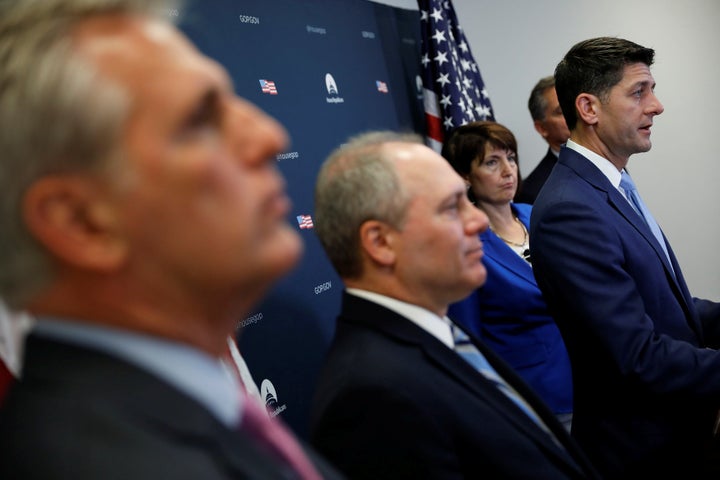Republicans want fewer children to receive food stamps.
They argue their proposal would simply move more parents into jobs, so the kids would be better off, but the result would be fewer children receiving benefits — whether their parents get jobs or not.
The Supplemental Nutrition Assistance Program currently exempts anyone raising minor children from its strictest “work requirements,” which deny benefits to people working less than 20 hours per week. Congressional Republicans are pushing to limit the exemption to parents whose children are younger than age 6 ― which would remove more than half a million children from the program.
The food stamp debate is not happening because there’s some kind of urgent problem with parents abusing the program, which has seen years of declining enrollment. It’s only happening because, for no important reason, Congress reauthorizes the program’s underlying statute every five years ― a tradition that is emblematic of the way federal budget policies disadvantage American children.
Kids make up almost a quarter of the U.S. population, but directly benefit from less than a tenth of federal spending, according to a new report by the Committee for a Responsible Federal Budget, a think tank that opposes budget deficits. (Children don’t directly apply for benefits, but the government counts them as recipients when their parents do.) Adults, by contrast, benefit from 60 percent of federal spending, with more than half of that going to senior citizens through programs like Social Security and Medicare.
It’s a good deal for older Americans, and maybe not such a good one for children.
The poverty rate for children was 18 percent in in 2016, according to the most recent estimate from the Census Bureau, the highest of any age group, compared to 9.3 percent of seniors. Even under the government’s alternate, more detailed measure of poverty ― which is favored by policy experts ― children had the highest rate at 15.2 percent, compared to 14.5 percent for seniors. Researchers have found that Social Security, which dishes out monthly benefits to retirees, is likely responsible for a major decline in poverty among the elderly in the U.S. during the 20th century.

Social Security and Medicare are so popular that they are almost untouchable. Though Republicans often complain that the programs have unsustainable financing, they shy away from proposing unpopular benefit cuts. Food stamps, by contrast, are on the chopping block every five years, no matter what, and almost half of SNAP spending goes to children.
“When you look systematically at every government program, the defaults put in place for adults and seniors are much more favorable than the defaults put in place for children,” said Marc Goldwein, a budget expert with the CRFB.
It’s not just that the most generous federal programs specifically serve the elderly. It’s also the rules Congress has put in place to govern those programs. A third of spending that benefits children comes through temporary programs that lawmakers have to keep reauthorizing. That’s true for just 10 percent of spending on adults; Social Security and Medicare can coast without any congressional intervention.
And if members of Congress could overcome the political barriers to fussing with Social Security, procedural barriers would remain. The program can’t be changed under fast-track budget process Republicans used to push a tax cut through the Senate without needing 60 votes in December. The so-called Byrd rule specifically prohibits Social Security proposals from being included in the fast-track “reconciliation” process.
Aside from food stamps, other temporary programs that benefit children include the Children’s Health Insurance Program, Head Start and Temporary Assistance for Needy Families. Unlike Social Security and Medicare, these programs aren’t “entitlements,” meaning they won’t cover anyone who is eligible (though SNAP does). And they’re more likely to be described colloquially as “welfare” and therefore perceived as benefiting minorities, which can weaken their support among the public.
The Committee for a Responsible Federal Budget doesn’t support making programs for children more like programs for adults ― even though doing so would probably reduce child poverty ― because the CRFB opposes budget deficits, or gaps between the government’s spending and its incoming tax revenue. The organization is just trying to draw attention to the lopsidedness of federal spending as part of its campaign for “fiscal responsibility,” which means making the government spend less than it taxes.
“The growth of programs for adults and the elderly is driving the national debt to unsustainable levels, which will ultimately impose a massive economic burden on younger and future generations,” the CRFB said in its report.
As for whether Congress will impose stricter work requirements on food stamp recipients, it seems unlikely. The House version of reauthorization legislation includes them, while the Senate version doesn’t. The two chambers will attempt to reconcile the bills this fall.
